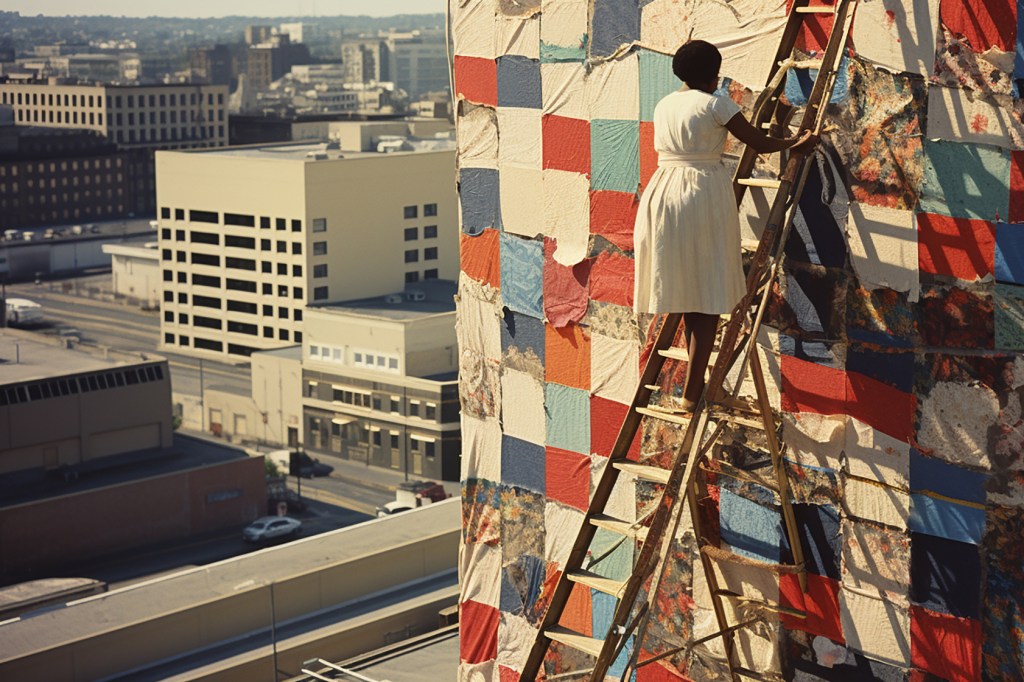Over the last few months, I have been using Midjourney, an image generator powered by artificial intelligence, to visualize surreal scenes of row houses, phone booths, and cathedrals—all clad with intricately patterned quilts. The images, purposely intended to be photorealistic, manage to weave nostalgia and absurdity into worlds that feel plausible, while also difficult to place in time and space.
Media artist Alisha B. Wormsley states on her billboard in Pittsburgh that “there are Black people in the future.” For me, conjuring these alternative worlds reveals the imagination embedded not only in everyday Black life but in the more futuristic effort of Black liberation. Bearing Wormsley’s charge in mind, my series invites Black folks to embrace the exuberance of the present in order to construct futures that serve them.
Quilting, in particular, offers a useful shorthand for the sophistication and resourcefulness embedded in Black material culture. For over a century, the community of Black women in Gee’s Bend, Ala., have been making a case for quilts as both a metaphor for and a material of warmth, care, remembrance, and durability. The quilts are collectively constructed, repurposing old shirts and feed sacks into compositions that seem somehow both meticulously planned and improvisational, traditional and contemporary. My series of Midjourney images—uniquely generated for this issue—suggests how architecture might hold space for Black futures through the Gee’s Bend quilter’s approach to quilting. The Black women depicted in the images have reappropriated quilts as a provocative architectural material: They cloak the downtown buildings of Birmingham, Ala., while also rendering them hyper-visible. One can also imagine the quilts being patched and reapplied over time, recasting the architecture as something less static—instead being continuously, and perhaps socially, maintained.
Ultimately, this work prompts us to envision new modes of stewardship, while looking to the quotidian to inspire emergent aesthetics in the built realm. Because as Gee’s Bend quilter Mensie Lee Pettway notes, “a quilt is more” than an aggregation of material. It is an invitation to redress notions of beauty, labor, and permanence.
